Houseplant Pruning Techniques: Get Your Plants Looking Their Best
Are you hesitant about pruning your houseplant? You are probably worried that you might damage your plant while trying to maintain its size or appeal. We understand your doubts. Fortunately, we have covered several houseplant pruning techniques that you can use to keep your plants in great shape. You can now prevent your houseplants from devouring your living room with their spindly branches. Keep reading to learn more.

Houseplant pruning techniques: Why it is important to prune houseplants
Pruning houseplants is the key to keeping them healthy and good-looking. Below is why you should occasionally prune your houseplant.
Encourage more growth
Pruning houseplants encourages more growth making your plant bushier and fuller. You can cut back overgrown branches and stems to encourage healthy plant growth. Houseplant pruning encourages the growth of lush beautiful foliage that adds glamor to your indoor space.
Reduce overcrowding
Some houseplants are fast-growers that can be invasive when left unattended. For instance, English Ivy can overgrow and become hazardous without regular pruning. Overcrowded foliage reduces proper air circulation and light absorption making portions of your plant unhealthy.
Damaged plant parts can further encourage pests and diseases. Pruning houseplants helps control their growth and discourages pest infestations and diseases.
Remove damaged plant parts
Pruning houseplants encourages a healthier plant by getting rid of damaged leaves, branches, or stems. By removing damaged plant parts, you divert the plant’s energy to producing new healthy leaves rather than focusing on healing the damaged parts.
Yellow leaves and damaged branches also affect the appeal of your plant. You can restore your plant’s beauty by removing the damaged parts.
Shape the plant
You probably want your plant to have a certain shape or attain a particular height. In this case, pruning your houseplant will help you manage the size and shape of your plant. Some houseplants can grow too tall for your indoor space. Pruning helps keep your plants more compact and manageable indoors.
Houseplant pruning techniques: When to prune houseplants
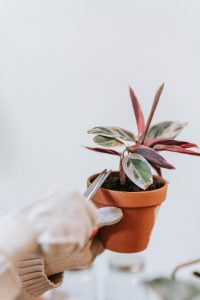
The most ideal time to prune houseplants depends on the type of plant you have. Some houseplants will respond better to pruning during early spring or late winter when growth is likely to be more robust.
Pruning houseplants in winter can be stressful to your plant since during this period most houseplants are dormant. During winter, your houseplant might struggle to recover from pruning.
However, you can lightly prune woody plants at any time of the year including winter by removing dead leaves and branches. If you have a flowering houseplant, the best time to prune it would be after flowering. Avoid pruning flowering plants right before they blossom. This is because the plants might still have buds that can become flowers.
Houseplant pruning techniques: How often to prune houseplants
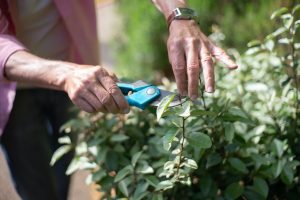
You might need to prune some houseplants more frequently than others depending on their growth rate. Fast-growing plants need more frequent pruning than slow-growing ones. Some houseplants can also become massive and grow tall requiring regular pruning to manage their sizes.
For instance, you might need to regularly prune a Monstera plant and Rubber Tree. On the other hand, small houseplants like Cacti or Aloe Vera don’t need regular pruning. You can occasionally pinch back vining plants like English Ivy to promote healthier growth.
Houseplant pruning techniques: How to prune houseplants
Pruning leggy houseplants is quite easy with the right skills and tools. Knowing what your plant needs is the key to pruning it correctly. Some houseplants might just need light maintenance pruning while others require hard pruning or deadheading.
What you need to prune houseplants
You need several tools to prune your plant depending on the type of houseplant at hand. These tools include:
Pruning shears
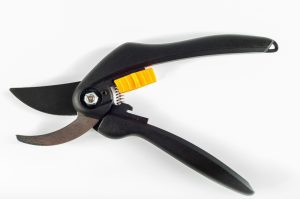
You will need the best pruning shears for houseplants to make clean cuts on your plant. Sterilize your houseplant pruning shears and ensure they are sharp enough. Pruning shears would be ideal for houseplants with thick woody stems.
Sharp scissors
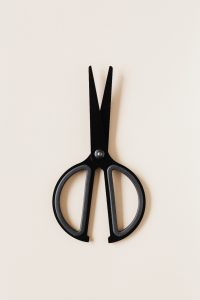
You will need sharp scissors to make smaller cuts on your houseplant. Make sure your scissors are clean to prevent diseases.
Gloves

While optional, you can wear gloves to protect your skin from irritants. Some houseplants can cause skin irritation when touched.
Steps to follow when pruning your houseplant
Below are houseplant pruning techniques you can use to correctly prune your plant.
Examine your plant
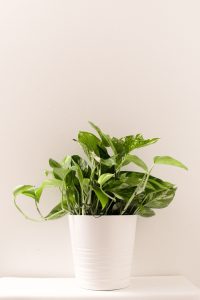
Before pruning your houseplant, first examine it to determine what kind of pruning it needs. Check for spindly growth, damaged leaves or branches, and imbalanced growth. Check for latent buds where new growth is likely to occur. You can find latent buds where the leaf merges with the stem.
Choose your tools
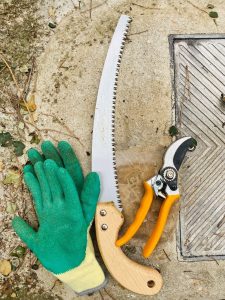
Determine the type of tools you need to prune your houseplant. For a plant with thin stems, scissors would be ideal. On the other hand, if you are dealing with a large plant with thick woody stems, you can opt for houseplant pruning shears.
Remove damaged and dead leaves and branches
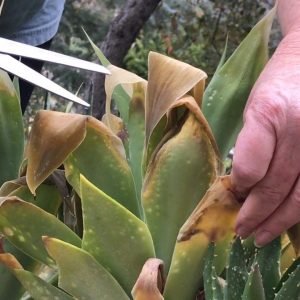
If you notice dead or damaged leaves and branches, gently trim them off using clean pruning shears or scissors. Ensure you make clean cuts to avoid tearing or crushing the stems.
Trim off dead flowers
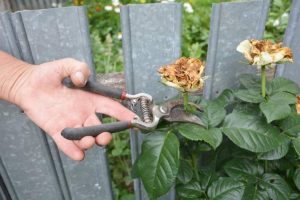
If you have a flowering plant, trim off any dead flowers at the base of the flower head. Deadheading allows your plant to divert its energy to producing new colorful blooms. Some houseplants produce insignificant flowers that you can also cut off to promote lush and healthier foliage.
Cut back overgrown branches and stems
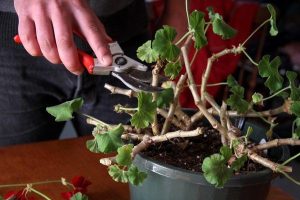
If your plant has spindly growth or overcrowded foliage, you can prune overgrown branches and stems to restore its shape and aesthetic appeal. Make your cuts using clean scissors or pruning shears.
Cut off spindly branches at a 45-degree angle just above the leaf node. A leaf node is where the leaf meets the stem and where growth will occur after pruning. Avoid pruning more than 25% of your houseplant.
For plants with soft stems like Coleus or English Ivy, you can pinch off the stem tips using your thumb and forefinger. Pinch off the stem just above the leaf node to encourage new growth. Occasionally pinching off the stem also promotes a fuller and bushier houseplant.
Pruning a Ficus Tree houseplant

Ficus Tree is a fast-growing houseplant that needs regular pruning to manage its size. The Ficus Tree plant does not like to be moved around and will drop its leaves when you change its location. The best thing would be to trim the plant to keep it compact. Here is how you prune a Ficus Tree houseplant.
- Use clean and sharp pruning shears for houseplants to trim your Ficus plant
- Wear gloves to protect your skin from the latex sap produced by the Rubber Tree
- Cut off any dead leaves and branches
- Trim off spindly branches just above a growth node
- Make clean cuts at a slanted angle to encourage more growth
- Snip off the tips of outer branches to encourage bushier growth
Pruning Areca Palm houseplant

Pruning an Areca Palm might kill the plant especially when you remove too many fronds. The only time you need to prune an Areca Palm plant is when the fronds are completely damaged. Areca Palm does not produce latent buds which means when you prune the dominant bud, no more growth will occur. It would be best to avoid pruning your Areca Palm.
Pruning Bird of paradise houseplant

Bird of Paradise is a flowering plant that you can occasionally prune to keep it in good shape. The best time to prune the Bird of Paradise plant is after blooming. Below is how you prune the Bird of Paradise plant.
- Use clean pruning shears to make clean cuts on your plant
- Remove dead and damaged leaves and stems
- Trim off dead flowers
- Cut back overgrown stems at the base just above a growth node
Pruning aftercare
Pruning can stress your houseplant and it might even appear droopy for a while. After pruning your houseplants, you need to provide the necessary care to help them recover. Here is how you care for your houseplant after pruning.
Keep your plant in bright indirect sunlight
Ensure your plant gets adequate lighting to promote healthy growth. Avoid exposing your plant to bright direct light to prevent damage.
Reduce watering
Your plant might not need frequent watering after reducing its foliage. Cut back on watering to prevent root rot. Just provide enough moisture while your plant develops new growth.
Avoid over-fertilizing your plant
After pruning, it would be best to reduce fertilizing to allow your plant to recover. Over-fertilizing your plant might damage its roots. Instead, allow your plant to grow first before resuming your fertilization schedule.
Pruning houseplants controls their size, shape, and appearance. You might have to prune some houseplants more frequently than others depending on their growth patterns. Some vining plants can become invasive while others can become too tall to fit in your indoor space. You can use some effective houseplant pruning techniques such as removing dead flowers and leaves, cutting back overgrown stems, and others to keep your plants looking ravishing as ever. For more information, reach out to us today.
